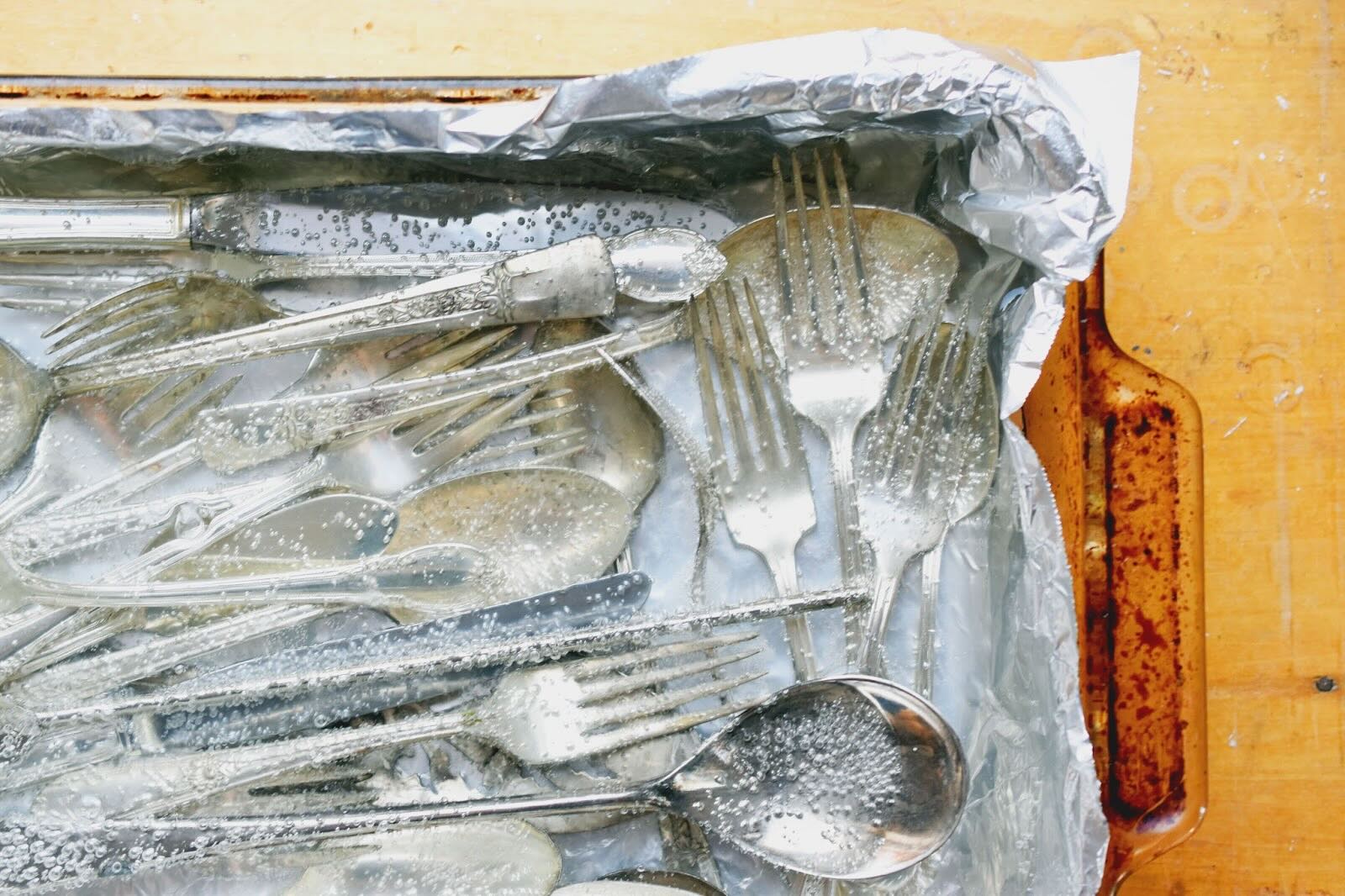

Tableware
How To Disinfect Silverware
Modified: August 17, 2024
Learn the best methods to disinfect your tableware, including silverware, to ensure a safe and germ-free dining experience. Keep your utensils clean and hygienic with these expert tips.
(Many of the links in this article redirect to a specific reviewed product. Your purchase of these products through affiliate links helps to generate commission for Storables.com, at no extra cost. Learn more)
Introduction
Welcome to our comprehensive guide on how to disinfect silverware! Silverware, also known as tableware, plays an essential role in our everyday lives. Whether it’s for a casual meal or a formal dining experience, using clean and hygienic silverware is crucial to ensure the health and well-being of ourselves and our loved ones.
With the recent global health concerns, it has become even more important to maintain proper hygiene and cleanliness, including disinfecting our tableware. While it’s common knowledge to wash silverware after use, not everyone is aware of the different methods and techniques available to effectively disinfect it.
In this article, we will explore various methods for disinfecting silverware, from traditional handwashing to using specialized cleaning solutions. We will also provide valuable tips and precautions to ensure a safe and effective disinfection process.
Whether you’re a home cook, a restaurant owner, or someone who simply wants to guarantee a germ-free dining experience, this guide will equip you with the knowledge and tools to keep your silverware sparkling clean and safe to use.
So let’s dive in and discover the best ways to disinfect silverware, ensuring that each meal is not only delicious but also safe and sanitary for everyone at your table.
Key Takeaways:
- Properly disinfecting silverware is crucial for maintaining a healthy dining environment, preventing the spread of harmful pathogens, and preserving the quality and appearance of utensils.
- From traditional handwashing to using bleach, vinegar, or steam, there are various effective methods for disinfecting silverware, each with unique benefits and considerations. Always prioritize safety and follow proper precautions.
Read more: How To Disinfect A Carpet
Understanding the Importance of Disinfecting Silverware
When it comes to maintaining a clean and healthy kitchen environment, disinfecting silverware should be a top priority. Silverware, which includes knives, forks, spoons, and other utensils, can easily harbor bacteria, viruses, and other harmful pathogens. Failure to properly disinfect silverware can lead to the spread of illnesses and infections.
One of the main reasons why silverware needs to be disinfected is because it comes into direct contact with our food. Any germs or contaminants present on the silverware surface can easily transfer to the food we consume, posing a significant health risk. This is especially important to consider in the context of foodborne illnesses, as contaminated silverware can be a major contributing factor.
Furthermore, regular disinfection of silverware is essential for preventing cross-contamination. Cross-contamination occurs when bacteria or pathogens are transferred from one surface to another. For example, if a knife used to cut raw meat is not properly disinfected before being used to cut vegetables, it can contaminate the vegetables and potentially lead to foodborne illness. By disinfecting silverware after each use, you can minimize the risk of cross-contamination and keep your kitchen and dining area safe.
In addition to protecting your health and the health of others, regularly disinfecting silverware also helps to maintain its quality and appearance. Over time, silverware can accumulate stains, tarnish, and other unsightly marks. Proper disinfection not only removes harmful pathogens but also helps to restore the shine and luster of the silverware, allowing it to look its best.
Lastly, in times of heightened health concerns, such as during a pandemic or viral outbreak, the importance of disinfecting silverware becomes even more apparent. By taking the necessary precautions and ensuring that your tableware is properly sanitized, you can significantly reduce the risk of contracting and spreading infections.
Overall, understanding the importance of disinfecting silverware is crucial for maintaining a hygienic and safe dining experience. By taking the time to properly disinfect your silverware, you can protect yourself and others from harmful pathogens, prevent cross-contamination, maintain the quality of your utensils, and promote a clean and healthy kitchen environment.
Methods for Disinfecting Silverware
Now that we understand the importance of disinfecting silverware, let’s explore the various methods available to ensure that your silverware remains clean, safe, and germ-free. Each method offers its own unique benefits and considerations, so you can choose the one that suits your needs and preferences.
1. Handwashing with Hot Water and Soap
Handwashing silverware is a simple yet effective method of disinfection. Start by rinsing the silverware under warm water to remove any visible debris. Then, apply a small amount of dish soap to a sponge or brush and thoroughly clean each utensil, paying attention to all surfaces. Rinse the silverware under hot water to remove any soap residue and dry it with a clean towel. This method is ideal for everyday use and is recommended when stainless steel or non-direct contact silverware is being used.
2. Using a Dishwasher
If you have a dishwasher, this can be a convenient and efficient way to disinfect your silverware. Load the dishwasher with the silverware items, making sure to separate them to avoid scratching. Use a dishwasher-safe detergent and select a hot water cycle. The high temperatures and thorough agitation of the dishwasher will effectively kill bacteria and germs. Once the cycle is complete, allow the silverware to air dry or use a clean towel to dry them before storing.
Read more: How To Disinfect Washer
3. Boiling Silverware
Boiling silverware is another traditional method of disinfection that can be easily done at home. Fill a large pot with water and bring it to a rolling boil. Carefully place the silverware into the boiling water and let it cook for a few minutes. Using tongs, remove the silverware from the boiling water and place it on a clean towel to dry completely before use. This method is particularly useful for delicate silverware that cannot withstand harsh detergents or high heat from a dishwasher.
4. Using Bleach Solution
A bleach solution is a powerful disinfectant that can effectively kill bacteria, viruses, and other pathogens on silverware. Create a mixture of one tablespoon of bleach per gallon of water in a basin or sink. Submerge the silverware in the solution and let it soak for a few minutes. Afterward, rinse the silverware thoroughly under running water and dry it with a clean towel. Be cautious when using bleach, as it can cause discoloration or damage to certain types of silverware. Always follow safety guidelines, including wearing gloves and proper ventilation.
5. Using Vinegar Solution
Vinegar is a natural and non-toxic disinfectant that can be used to clean and sanitize silverware. Prepare a solution by mixing equal parts of white vinegar and water in a container. Submerge the silverware in the solution and let it soak for at least 5-10 minutes. Afterward, rinse the silverware thoroughly with water and dry it with a clean towel. Vinegar can help remove stains and restore the shine of the silverware while eliminating germs.
6. Using Hydrogen Peroxide
Hydrogen peroxide is another effective disinfectant that can be used to sanitize silverware. Create a solution by mixing equal parts of hydrogen peroxide and water in a container. Submerge the silverware in the solution and let it soak for a few minutes. Rinse the silverware thoroughly with water and dry it with a clean towel. Make sure to use food-grade hydrogen peroxide and follow the instructions and safety precautions on the bottle.
Read more: How To Disinfect Toothbrush After Strep
7. Steam Cleaning Silverware
If you have a steam cleaner or a steam appliance with a nozzle attachment, you can use it to effectively disinfect your silverware. Direct the steam onto each utensil, making sure to cover all surfaces, for a few seconds. The high temperature of the steam will kill bacteria and germs. After steam cleaning, allow the silverware to cool down and dry completely before use.
Remember to consider the material and type of silverware you have when choosing a disinfection method. Delicate items may require gentler techniques, while sturdy stainless steel can withstand more robust cleaning methods.
By following these various methods for disinfecting silverware, you can ensure that your tableware remains free from harmful pathogens and ready for the next meal. Experiment with different methods to find the one that suits you best, and enjoy the peace of mind that comes with knowing your silverware is properly disinfected.
Method 1: Handwashing with Hot Water and Soap
Handwashing silverware is one of the simplest and most accessible methods for disinfecting your tableware. It is a time-tested and effective way to remove dirt, germs, and bacteria from your silverware. Follow these steps to properly handwash your silverware using hot water and soap:
- Gather Your Supplies: Before you begin, assemble the necessary supplies. You will need a basin or sink, dish soap, a sponge or brush, and clean, hot water.
- Rinse the Silverware: Start by rinsing your silverware under warm water to remove any visible debris or food particles. This initial step will make the cleaning process more efficient.
- Apply Dish Soap: Apply a small amount of dish soap to a sponge or brush. Choose a mild and gentle dish soap that is safe for use on silverware.
- Clean Each Utensil: Take one utensil at a time and thoroughly clean all surfaces. Pay special attention to areas where food residue may be trapped, such as the handle, the back of the fork tines, and the bowl of the spoon. Scrub gently but firmly to ensure thorough cleaning.
- Rinse with Hot Water: Once the silverware is clean, rinse it thoroughly under hot water. Hot water helps to remove any remaining soap residue and aids in killing bacteria and germs.
- Dry Thoroughly: After rinsing, dry the silverware with a clean towel. Leaving them to air dry may result in water spots or tarnishing. Ensure that each utensil is completely dry before storing or using them again.
It’s important to note that handwashing with hot water and soap is ideal for everyday use and when stainless steel or silver-plated silverware is being used. For delicate or antique silverware, it is advisable to follow specific care instructions or consult a professional.
Regular handwashing not only disinfects your silverware but also helps to remove stains, dirt, and tarnish. It keeps your silverware looking clean, bright, and presentable for your next meal.
Remember, handwashing is not a one-time fix. It is recommended to repeat this process after each use to keep your silverware clean and safe for every meal.
Now that you know how to handwash your silverware properly, you can confidently maintain a germ-free dining experience for you and your loved ones.
Method 2: Using a Dishwasher
If you have a dishwasher, utilizing it as a method for disinfecting your silverware can be convenient and efficient. Dishwashers are designed to thoroughly clean and sanitize your dishes, including silverware. Follow these steps to effectively disinfect your silverware using a dishwasher:
- Load the Dishwasher: Begin by arranging your silverware in the dishwasher. Separate each utensil to prevent them from scratching each other and to ensure adequate water flow.
- Select the Proper Cycle: Most dishwashers offer different cycles, such as Normal, Heavy-Duty, Sanitize, or Antibacterial cycles. Choose the cycle that provides the highest temperature and longest cleaning duration for maximum disinfection.
- Use a Dishwasher-Safe Detergent: It is essential to use a dishwasher-safe detergent that effectively removes dirt, grease, and bacteria. Select a high-quality detergent that is free from unnecessary chemicals and additives.
- Add Rinse Aid: Adding a rinse aid to your dishwasher can help ensure spot-free and shiny silverware. The rinse aid aids in proper drying and prevents water spots and streaks.
- Run the Dishwasher: Start the dishwasher and allow it to complete the entire cleaning cycle. The dishwasher will use hot water, powerful jets, and detergents to thoroughly clean and sanitize the silverware.
- Air Dry or Towel Dry: Once the dishwasher cycle is complete, you can choose to either allow the silverware to air dry or use a clean towel to dry them. If you choose to air dry, make sure to open the dishwasher door slightly to allow proper ventilation.
Using a dishwasher to disinfect your silverware is a convenient option, especially when dealing with a large number of utensils or when you are short on time. The high temperatures and thorough agitation of the dishwasher effectively kill bacteria and other pathogens.
Keep in mind that not all silverware is suitable for dishwasher use. Delicate or antique silverware, as well as silver-plated items, may be subject to damage or tarnishing in the dishwasher. It’s always best to consult the manufacturer’s recommendations or care instructions for your specific silverware.
By utilizing your dishwasher as a method for disinfection, you can ensure that your silverware remains hygienic and ready for every meal. Enjoy the convenience and peace of mind that comes with knowing your utensils are properly sanitized, and spend less time on manual handwashing.
Method 3: Boiling Silverware
Boiling silverware is a traditional and effective method for disinfecting your utensils. This method is particularly useful for delicate silverware that cannot withstand harsh detergents or high heat from a dishwasher. Here’s how you can disinfect your silverware by boiling:
- Prepare a Pot of Water: Fill a large pot with enough water to fully submerge the silverware. Make sure the pot is clean and large enough to accommodate all the utensils without overcrowding.
- Heat the Water: Place the pot on the stovetop and bring the water to a rolling boil. Boiling water is a natural and effective way to kill bacteria, viruses, and other pathogens.
- Submerge the Silverware: Carefully place the silverware into the boiling water. Use tongs or a slotted spoon to prevent any injuries from steam or hot water splashes. Ensure that all the utensils are fully submerged.
- Boil for a Few Minutes: Allow the silverware to boil for a few minutes. The exact duration will depend on the level of disinfection required and the instructions provided by the silverware manufacturer. Generally, boiling for 5 to 10 minutes should be sufficient.
- Remove and Dry: Using tongs or a slotted spoon, carefully remove the silverware from the boiling water. Place the utensils on a clean towel or drying rack to dry completely before using or storing. Avoid placing hot silverware directly onto cold surfaces, as sudden temperature changes may cause damage.
Boiling is an effective way to kill bacteria and sanitize silverware, especially when dealing with delicate or antique pieces. However, it is important to note that excessive boiling or prolonged exposure to high temperatures can potentially cause damage, discoloration, or warping to certain types of silverware. Always refer to the manufacturer’s guidelines or consult a professional when in doubt.
Boiling silverware is a simple and accessible method that requires minimal supplies. It is perfect for situations where you need to quickly disinfect your silverware without the use of specialized cleaning products or appliances. It is particularly useful when you need to sanitize silverware during outdoor activities, camping trips, or in emergency situations.
By utilizing the boiling method, you can effectively disinfect your silverware, ensuring that it is safe to use for your next meal. Enjoy the peace of mind that comes with knowing that your utensils are not only clean but also free from harmful pathogens.
Read more: How To Disinfect Wood Furniture
Method 4: Using Bleach Solution
Using a bleach solution is a powerful method for disinfecting your silverware and eliminating harmful bacteria, viruses, and other pathogens. However, it is important to handle bleach with caution and use it properly. Follow these steps to disinfect your silverware using a bleach solution:
- Dilute the Bleach: Start by preparing a bleach solution. Mix one tablespoon of bleach with a gallon of water in a basin or sink. Ensure that the bleach you use is suitable for sanitizing food-contact surfaces.
- Submerge the Silverware: Place the silverware in the bleach solution, ensuring that each utensil is fully submerged. Allow the silverware to soak for a few minutes to ensure thorough disinfection.
- Rinse with Water: After the desired soaking time, remove the silverware from the bleach solution. Rinse each utensil under running water to remove any remaining bleach residue. It is crucial to remove all traces of bleach, as it can leave an unpleasant taste or odor on your silverware if not rinsed thoroughly.
- Dry Thoroughly: Once rinsed, dry the silverware with a clean towel. Make sure the utensils are completely dry before storing or using them again to prevent any moisture-related issues such as tarnishing or corrosion.
It is important to exercise caution when using a bleach solution. Here are a few safety tips to keep in mind:
- Ensure Proper Ventilation: When working with bleach, make sure the area is well-ventilated to avoid inhaling harsh fumes. Open windows or doors, or work in an area with good air circulation.
- Wear Protective Gloves: Protect your skin by wearing rubber gloves when handling bleach. This will help to prevent any potential skin irritation or chemical burns.
- Never Mix Bleach with Ammonia or Vinegar: Mixing bleach with other cleaning agents, such as ammonia or vinegar, can produce toxic fumes. Always use bleach on its own or as directed by the manufacturer.
- Store Bleach Safely: Store bleach in a cool, dry place, away from direct sunlight and out of reach of children or pets.
Using a bleach solution provides a strong and effective method for disinfecting your silverware. However, it is crucial to follow safety guidelines and only use bleach on silverware that is resistant to its effects. If you are unsure about the suitability of bleach for your specific silverware, consult the manufacturer’s recommendations or seek professional advice.
By properly using a bleach solution, you can ensure that your silverware is thoroughly disinfected, providing you with peace of mind when it comes to the cleanliness and safety of your dining experience.
Method 5: Using Vinegar Solution
Vinegar is a natural and non-toxic disinfectant that can be used to effectively sanitize your silverware. Using a vinegar solution is an eco-friendly alternative to chemical-based disinfectants. Follow these steps to disinfect your silverware using a vinegar solution:
- Create a Vinegar Solution: In a container or basin, mix equal parts of white vinegar and water. The acidity of the vinegar helps to kill bacteria and eliminate odors.
- Submerge the Silverware: Place the silverware in the vinegar solution, ensuring that all utensils are fully submerged. Allow them to soak for at least 5-10 minutes to allow the vinegar to work its disinfecting magic.
- Rinse with Water: Once the silverware has soaked in the vinegar solution, remove each utensil and rinse it under running water. This step helps to remove any residual vinegar and prevent any lingering taste or odor.
- Dry Thoroughly: After rinsing, dry the silverware with a clean towel. Make sure that each utensil is completely dry before storing or using them again to prevent any moisture-related issues.
Using a vinegar solution is not only effective in disinfecting your silverware but also helps to remove stains and restore the shine to your utensils. Additionally, vinegar has natural antibacterial properties, making it a safe and affordable option for cleaning and sanitizing your silverware.
Keep in mind that while vinegar is an excellent disinfectant, it may not be suitable for all types of silverware. For example, antique or delicate silverware may require more gentle cleaning methods to avoid damage. Always consider the specific care instructions for your silverware and use vinegar with caution.
Vinegar is a versatile household ingredient that can be used for various cleaning purposes. By using a vinegar solution to disinfect your silverware, you not only ensure a clean and germ-free dining experience, but you also contribute to a more sustainable and environmentally friendly cleaning routine.
Enjoy the benefits of using vinegar as a disinfectant and confidently serve your meals with silverware that is not only clean but also safely sanitized.
Method 6: Using Hydrogen Peroxide
Hydrogen peroxide is a versatile and effective disinfectant that can be used to sanitize your silverware. It is a powerful oxidizer that kills bacteria, viruses, and other pathogens. Follow these steps to disinfect your silverware using hydrogen peroxide:
- Create a Hydrogen Peroxide Solution: In a container or basin, mix equal parts of hydrogen peroxide and water. Make sure to use food-grade hydrogen peroxide, typically available in 3% concentration, for safe use on silverware.
- Submerge the Silverware: Place the silverware in the hydrogen peroxide solution, ensuring that all utensils are fully submerged. Allow them to soak for a few minutes to allow the hydrogen peroxide to work its disinfecting magic.
- Rinse with Water: After the silverware has soaked in the hydrogen peroxide solution, remove each utensil and rinse it thoroughly under running water. This step helps to remove any residual hydrogen peroxide and prevent any lingering taste or odor.
- Dry Thoroughly: After rinsing, dry the silverware with a clean towel. Ensure that each utensil is completely dry before storing or using them again to prevent any moisture-related issues.
Hydrogen peroxide is a safe and effective disinfectant when used properly. However, it’s essential to follow the instructions and safety precautions on the hydrogen peroxide bottle. Avoid using higher concentrations as they may damage your silverware or be unsafe for food contact surfaces.
Remember to only use hydrogen peroxide on silverware that is resistant to its effects. If you are unsure about the suitability of hydrogen peroxide for your specific silverware, refer to the manufacturer’s recommendations or consult a professional.
Using hydrogen peroxide to disinfect your silverware provides a powerful, yet gentler, alternative to chemical-based disinfectants. It leaves your utensils sanitized and ready for your next meal.
Embrace the benefits of using hydrogen peroxide as a natural and effective disinfectant and enjoy the peace of mind that comes with knowing your silverware is both clean and safely sanitized.
Method 7: Steam Cleaning Silverware
Steam cleaning is a highly effective method for disinfecting your silverware. It utilizes the power of high-temperature steam to kill bacteria, viruses, and other pathogens, leaving your utensils clean, sanitized, and ready for use. Here’s how you can steam clean your silverware:
- Use a Steam Cleaner or Steam Appliance: If you have a steam cleaner or a steam appliance with a nozzle attachment, you can use it to effectively clean and disinfect your silverware. Ensure that the steam cleaner is in good working condition and follow the manufacturer’s instructions for use.
- Direct the Steam onto Each Utensil: Hold the steam nozzle a few inches away from each silverware item and direct the steam onto all surfaces. Move the nozzle in a consistent and methodical manner, ensuring that each utensil is thoroughly exposed to the steam. Pay extra attention to hard-to-reach areas and crevices.
- Allow the Utensils to Cool and Dry: After steam cleaning, allow the silverware to cool down and dry completely. Avoid handling the hot utensils to prevent burns. Once cool and dry, the silverware is ready for use or storage.
Steam cleaning is particularly beneficial for silverware made of stainless steel because it effectively kills bacteria without the need for harsh chemicals or manual scrubbing. However, it’s important to check the manufacturer’s recommendations for your specific silverware as some delicate or antique pieces may not be suitable for steam cleaning.
Aside from disinfecting, steam cleaning also helps to remove stubborn stains, grease, and grime from your silverware, leaving them looking clean and fresh. It is a time-efficient method that allows for quick and effective cleaning of multiple items at once.
Keep in mind that safety is paramount when using a steam cleaner. Always follow the manufacturer’s instructions, wear appropriate protection for your hands and eyes, and avoid pointing the steam directly at yourself or others.
With the power of high-temperature steam, you can enjoy the ease and effectiveness of steam cleaning to disinfect your silverware. Embrace the advantages of this method and confidently use clean and sanitized utensils for your meals.
To disinfect silverware, wash with hot, soapy water, then soak in a solution of 1 tablespoon of bleach per gallon of water for 5 minutes. Rinse thoroughly and air dry.
Read more: How To Identify Silverware
Precautions and Safety Tips
While disinfecting silverware is essential for maintaining a clean and safe dining experience, it is crucial to follow proper precautions and safety measures to ensure the well-being of yourself and others. Here are some important precautions and safety tips to keep in mind:
- Read and Follow Manufacturer’s Instructions: Always refer to the manufacturer’s guidelines and recommendations for your specific silverware. Different materials and finishes may require unique care and cleaning methods.
- Handle Cleaning Products with Care: Whether you are using bleach, vinegar, hydrogen peroxide, or other cleaning solutions, always handle them with caution. Read the product labels for proper usage instructions, dilution ratios, and safety precautions.
- Protect Yourself: When using cleaning chemicals or hot water, wear gloves to protect your hands from irritants and potential burns. Additionally, ensure proper ventilation in the area to avoid breathing in harmful fumes.
- Avoid Mixing Cleaning Products: Never mix different cleaning products together, as this can produce dangerous chemical reactions. For example, mixing bleach and vinegar creates toxic chlorine gas.
- Test Compatibility: If you are using any cleaning solution or method for the first time, test it on a small, inconspicuous area of your silverware before applying it to the entire set. This step helps to ensure compatibility and prevent any potential damage.
- Handle Silverware with Care: When cleaning or disinfecting your silverware, be gentle to avoid scratches or other damage. Use soft brushes or sponges and avoid abrasive cleaners or scouring pads.
- Consult a Professional: If you have valuable or antique silverware, consider consulting a professional for proper cleaning and disinfection methods to preserve their integrity. They can provide expert guidance tailored to your specific silverware.
Additionally, it is essential to maintain good hygiene practices in your kitchen and dining area. Wash your hands thoroughly before and after handling silverware, and encourage others to do the same. Regularly clean and sanitize the surfaces where your silverware is stored or used, such as drawers, cabinets, and countertops, to prevent cross-contamination.
Remember that the goal of disinfecting silverware is to eliminate harmful pathogens and create a safe dining environment. By following proper precautions and safety tips, you can confidently maintain a clean and sanitary dining experience for yourself and your loved ones.
Conclusion
Clean and properly disinfected silverware is a vital component of maintaining a healthy and safe dining environment. By following the appropriate methods and techniques for disinfecting your silverware, you can ensure that each meal is not only delicious but also free from harmful pathogens.
In this comprehensive guide, we have explored various methods for disinfecting silverware. From traditional handwashing with hot water and soap to using a dishwasher, boiling, using bleach or vinegar solutions, hydrogen peroxide, and steam cleaning, each method offers its own unique benefits and considerations.
It is crucial to choose the method that suits your specific silverware type and personal preferences. Delicate or antique silverware may require more gentle care, while robust stainless steel utensils can withstand more robust cleaning methods.
Throughout the disinfection process, it’s important to prioritize safety and follow proper precautions. This includes reading and following manufacturer’s instructions, handling cleaning products with care, protecting yourself with gloves and proper ventilation, avoiding mixing cleaning products, and consulting professionals when necessary.
Maintaining good hygiene practices in your kitchen and dining area, such as regular handwashing, sanitizing surfaces, and storing silverware correctly, further supports a clean and safe dining experience.
By taking the time to properly disinfect your silverware, you not only protect yourself and others from potential infections but also extend the lifespan and appearance of your utensils. Clean and sparkling silverware adds an extra touch of elegance to any meal, enhancing the overall dining experience.
So, whether you’re a home cook preparing a family dinner or a professional chef serving guests in a restaurant, implementing proper silverware disinfection practices is crucial.
Now that you are equipped with a variety of methods for disinfecting silverware, you can confidently choose the approach that suits your needs and preferences. Enjoy the peace of mind that comes with knowing your silverware is clean, safe, and ready for every meal.
Frequently Asked Questions about How To Disinfect Silverware
Was this page helpful?
At Storables.com, we guarantee accurate and reliable information. Our content, validated by Expert Board Contributors, is crafted following stringent Editorial Policies. We're committed to providing you with well-researched, expert-backed insights for all your informational needs.
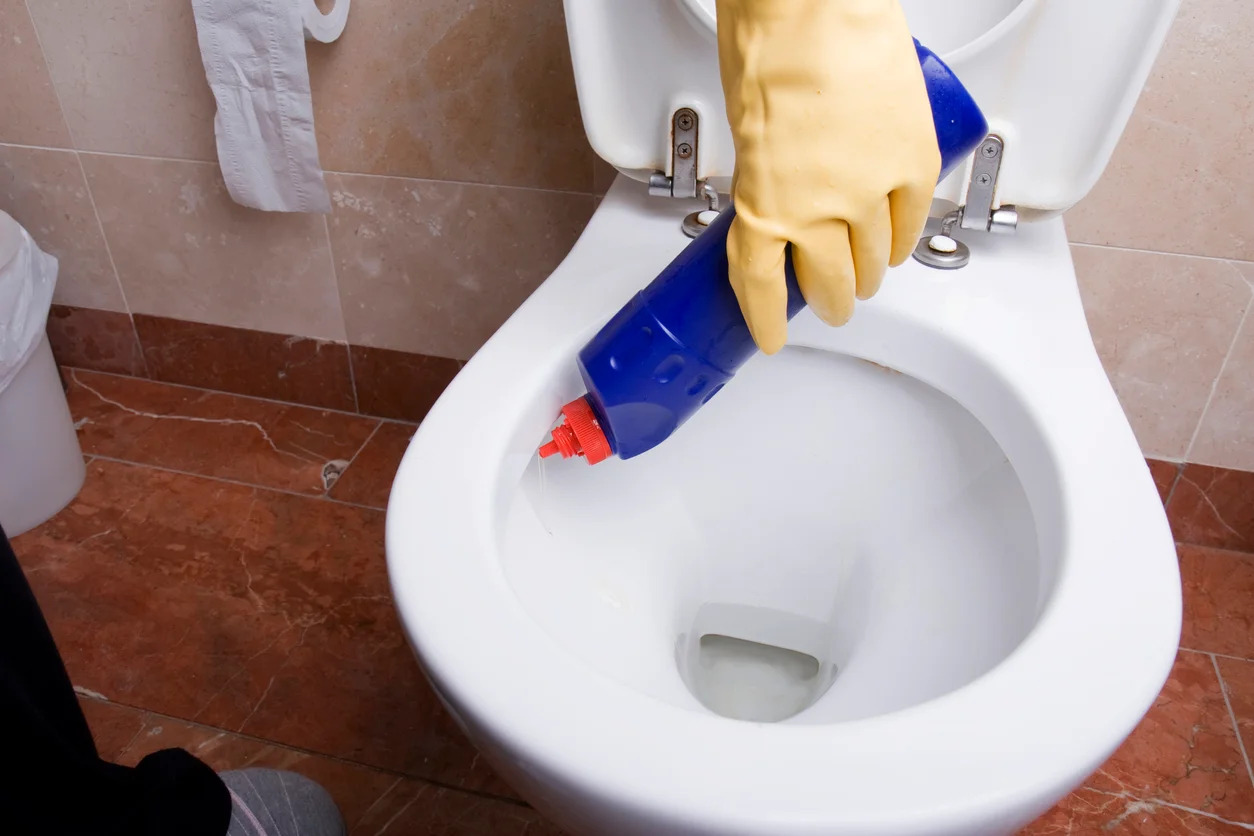
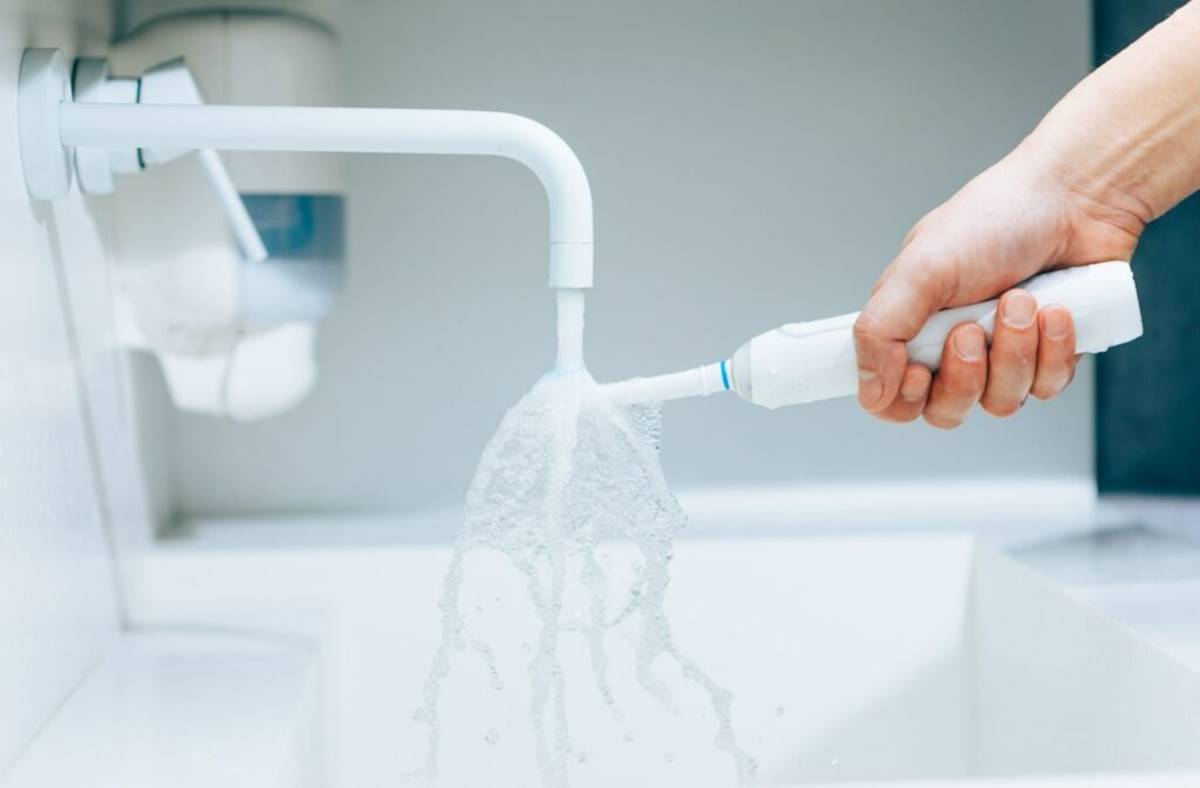
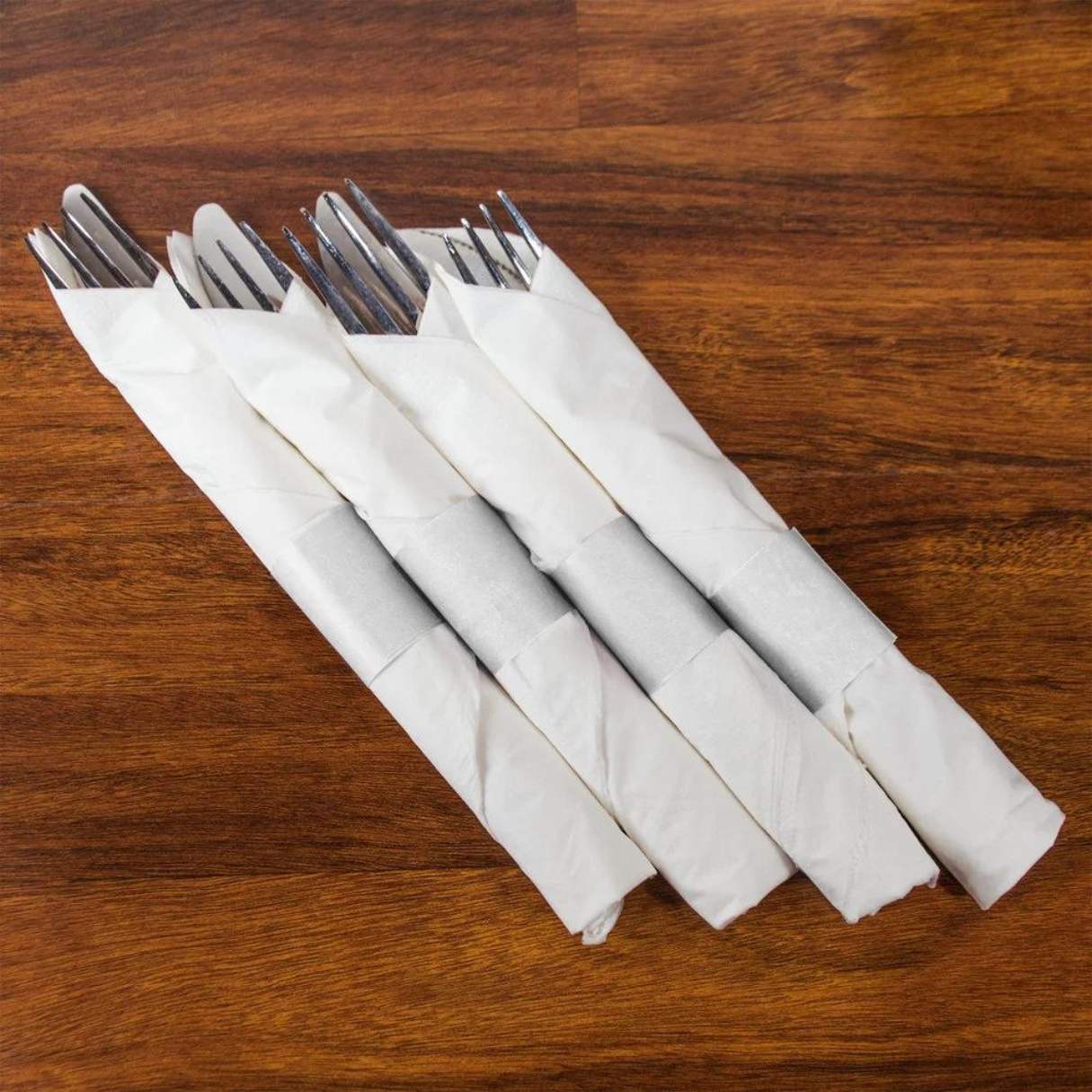

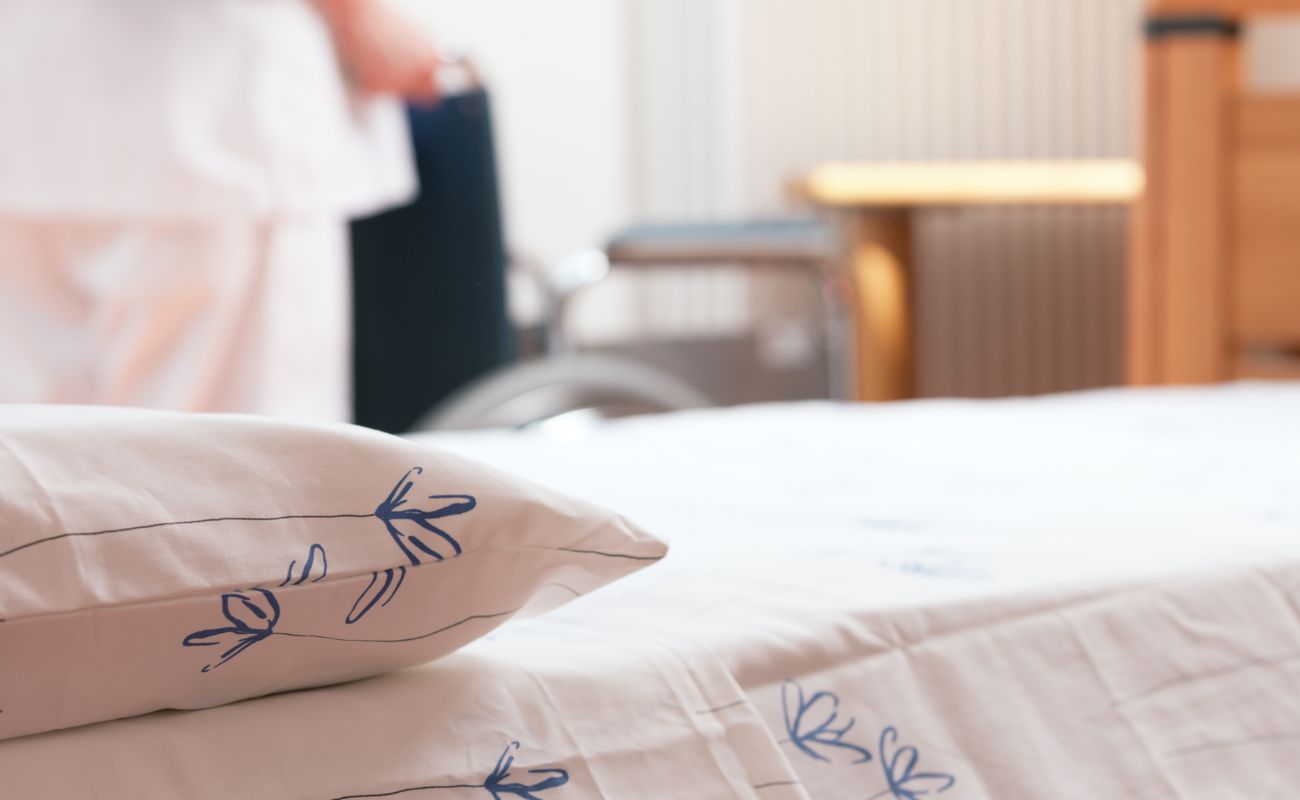
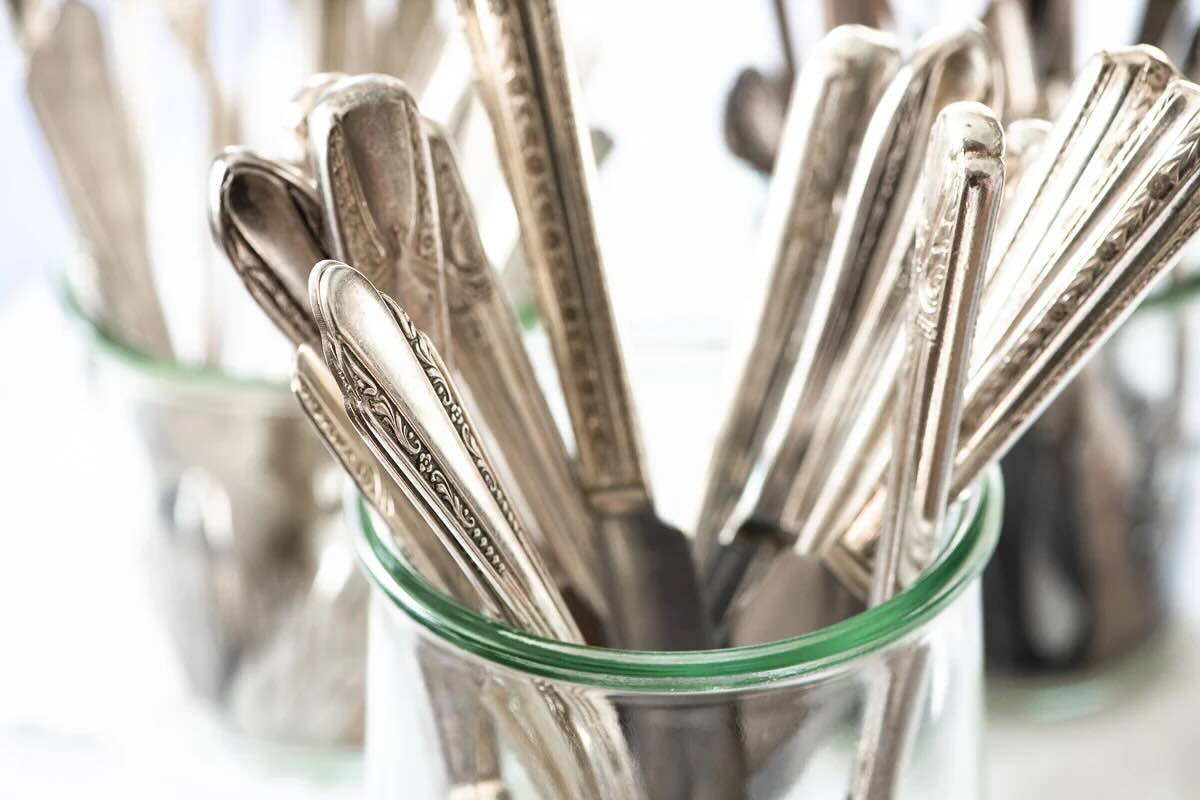
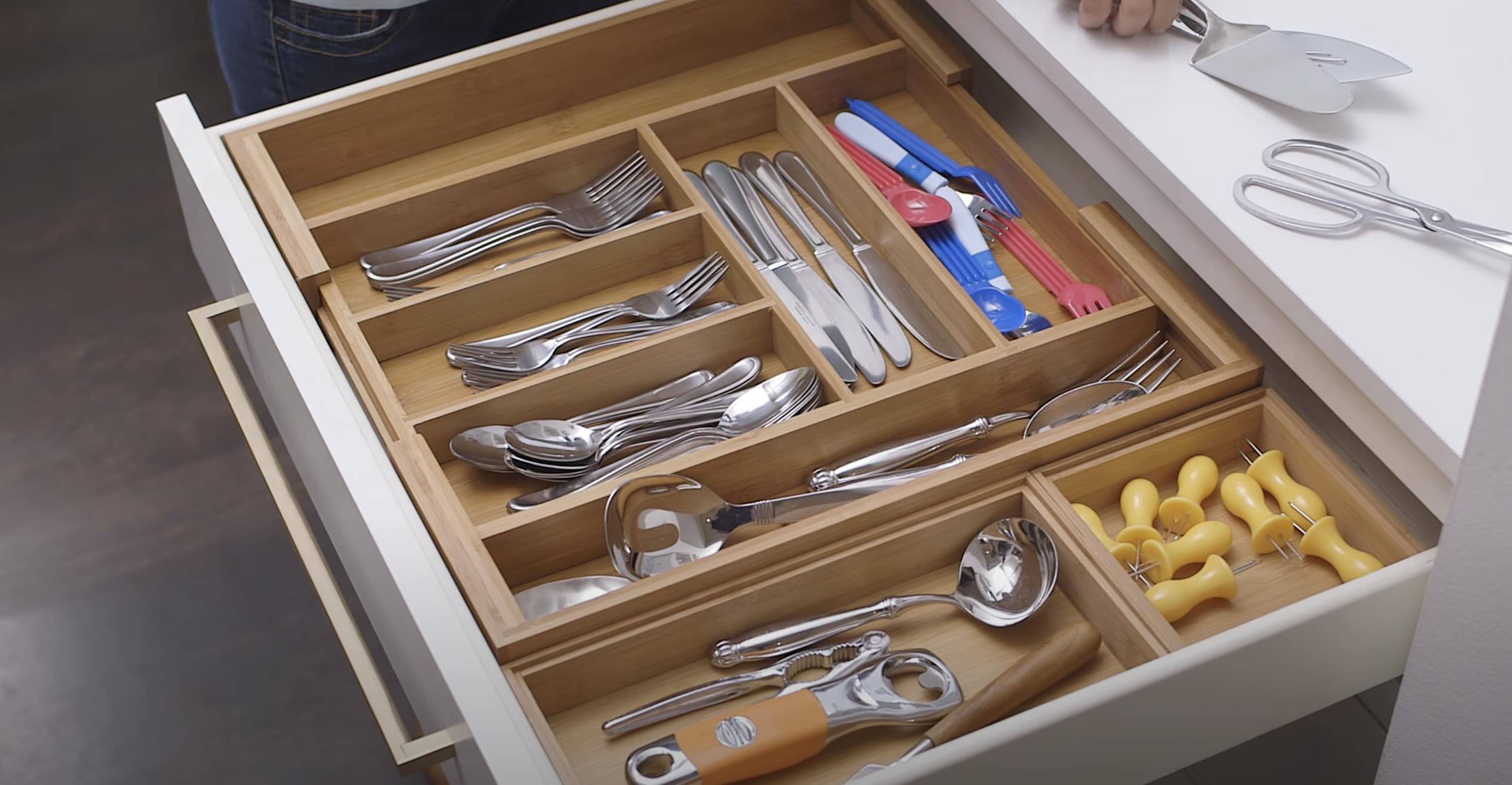

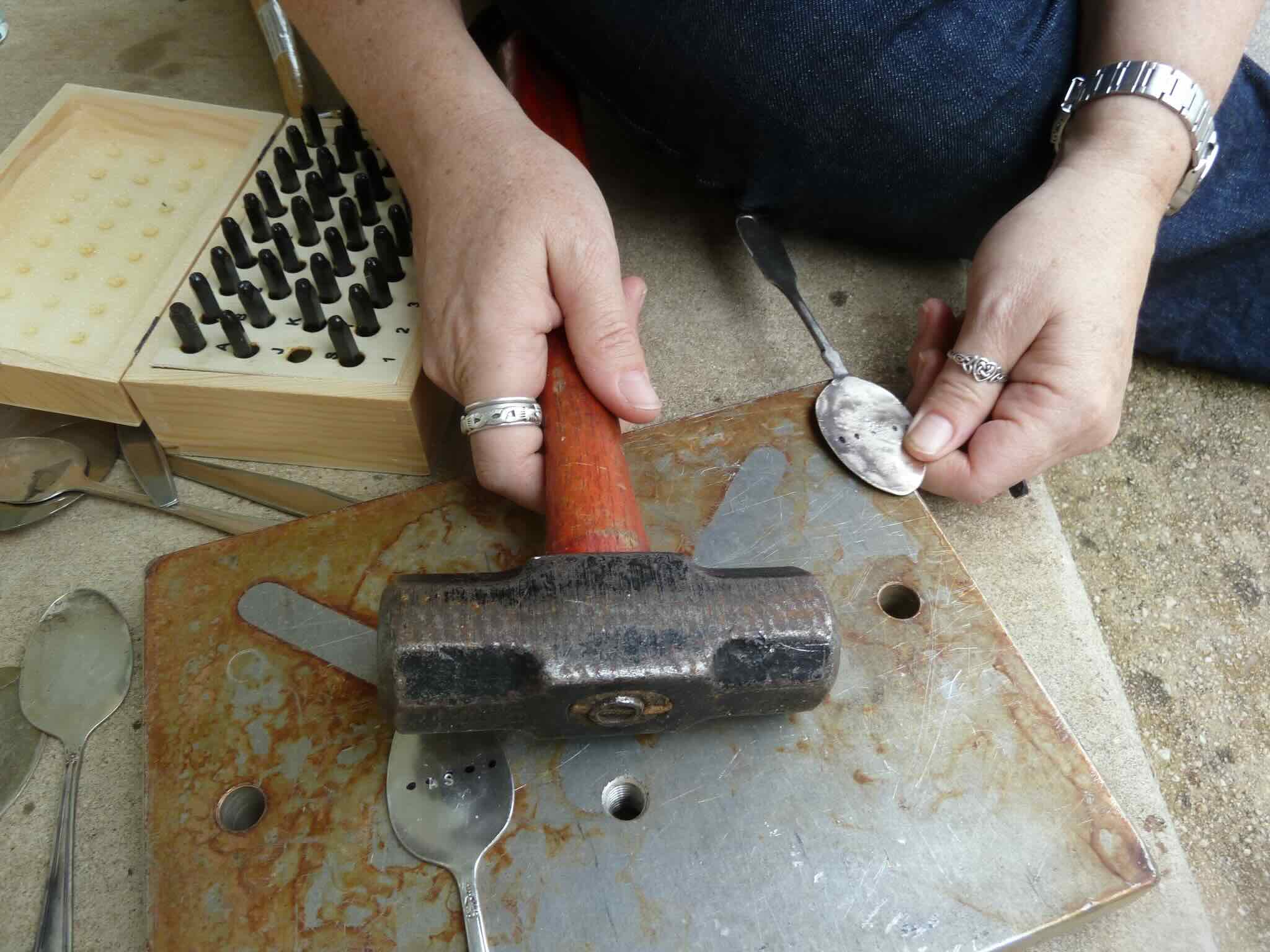
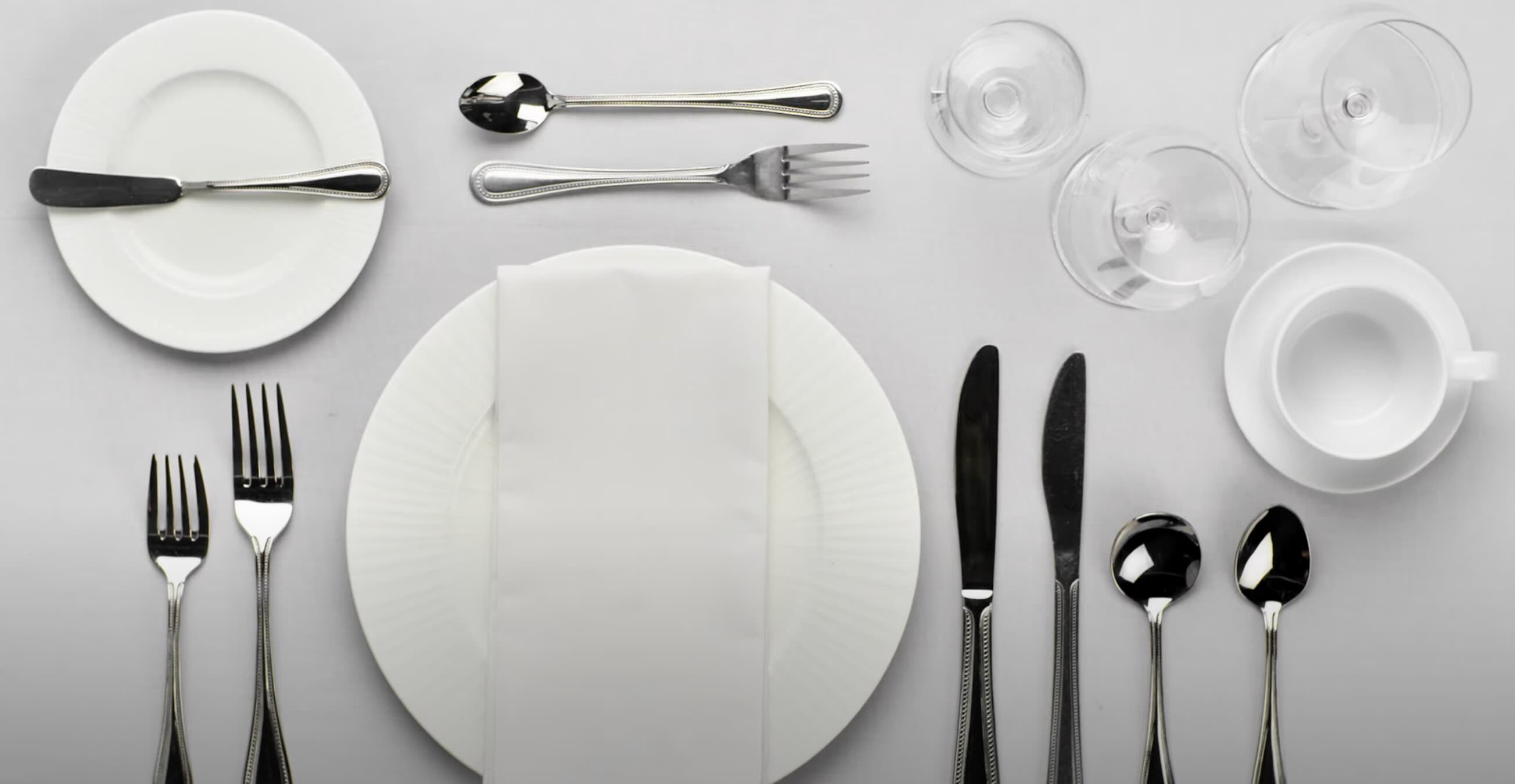
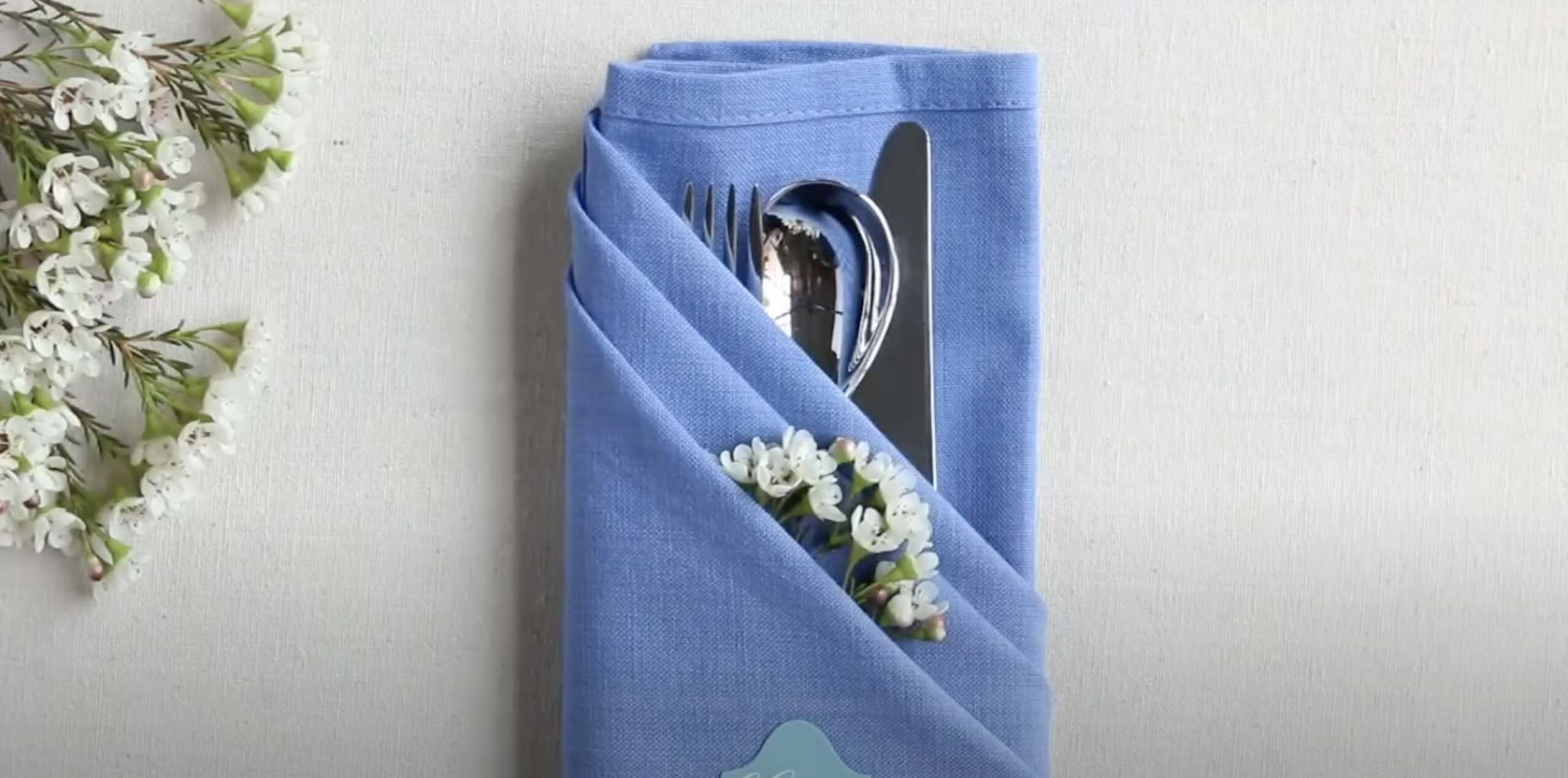

0 thoughts on “How To Disinfect Silverware”